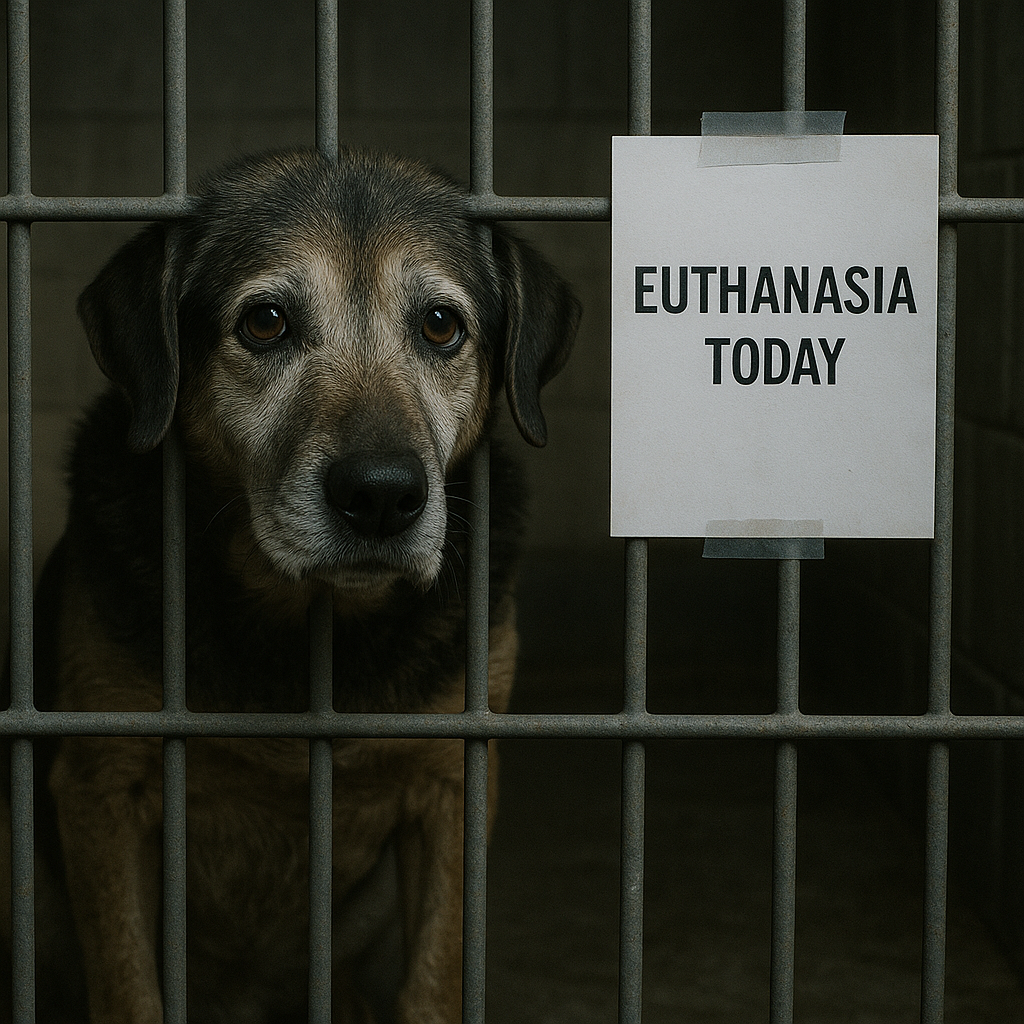When his eyes met mine, something inside me shifted. It wasn’t a spark of joy or hope. It was the quiet resignation of a soul that had already accepted the end. And that was the moment I knew—I couldn’t let him go out that way.
I hadn’t even planned to be there that morning. A friend had asked if I wanted to visit the shelter with her, “just to look.” I told myself I wouldn’t get attached. But walking down that corridor of cages, the barking echoing, the smell of disinfectant and fear hanging heavy in the air, I felt my heart breaking with every step.
Most of the dogs leapt at the bars, eager for any scrap of attention. But one kennel was different. Silent. Still. In the back corner, curled up like he wanted to disappear, was a dog with a graying muzzle and thin frame. His coat was dull, his eyes half-closed.
I leaned closer to read the paper taped to the bars, and that’s when I froze. “Euthanasia scheduled – 4:00 PM.” I checked my phone. It was 11:15. Less than five hours left.
I crouched down, whispering softly, “Hey, buddy.” For a moment, nothing. Then, slowly, he lifted his head and looked at me. His eyes were the saddest I’ve ever seen. Not fear. Not anger. Just emptiness, like he had stopped expecting anything good from the world.
“Why him?” I asked the volunteer beside me, my throat tight. She sighed. “He’s old, he’s been here a long time, and no one’s shown interest. We don’t have space.”
I sat there longer than I meant to, watching him. He didn’t move closer, didn’t wag his tail. But in those few minutes, I realized something: maybe he wasn’t fighting anymore—but I could.
I stood up and said words I hadn’t planned on saying: “I’ll take him.”
The volunteer blinked. “You’re sure?”
“Yes,” I said firmly, even though my voice shook. “I can’t let him die like this.”
They rushed through the paperwork, almost surprised someone wanted him. When the kennel door finally opened, I knelt down. Slowly, painfully, he rose to his feet. His legs trembled, but he walked toward me, eyes fixed like he couldn’t quite believe it. When he leaned his head against my knee, I broke down crying right there in the shelter.
I named him Samson—because though he looked weak, he carried the weight of survival with quiet strength.
The first weeks weren’t easy. He was timid, exhausted, unsure of the new world around him. But little by little, things changed. The first time he wagged his tail, it was just a tiny flick, but I cheered like it was a miracle. The first time he curled up beside me on the couch, I felt like I’d been given a gift. And the first time he barked at the mailman, I laughed through tears—proof that life was coming back into him.
Months later, Samson is unrecognizable. His coat has a shine, his eyes sparkle, and his tail never stops moving. He follows me from room to room, his loyalty as steady as his heartbeat. Sometimes, when I watch him sleeping peacefully at my feet, I think about that slip of paper. About how close he was to being forgotten.
But he wasn’t forgotten. He was saved. And in saving him, I saved a piece of myself I didn’t know was missing.
Author’s Note:
Samson taught me that sometimes rescues don’t look like wagging tails or excited jumps. Sometimes they look like silence, like giving up—and that’s when they need us the most.
Final Thought
Every dog deserves more than an ending written on a piece of paper. They deserve love, dignity, and a chance to feel safe again. Rescue isn’t just about saving lives—it’s about rewriting endings.

